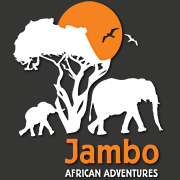Background Information
Kafue is Zambia’s oldest park and by far the largest. It was proclaimed in 1950 and is spread over 13,400 square miles – the second largest national park in the world and about the size of Wales. Despite the depravations of poaching and lack of management, the park is still a raw and diverse slice of African wilderness with excellent game viewing, bird watching and fishing opportunities. Much of the park consists of woodland, which opens out at intervals into wide, grassy areas known as “dambos”, grazed by sable, hartebeest, wildebeest, buffalo and zebra. From the astounding Busanga Plains in the northwestern section of the Park to the tree-choked wilderness and the lush dambos of the south, fed by the emerald green Lunga, Lufupa and Kafue Rivers, the park sustains huge herds of a great diversity of wildlife.
Wildlife includes thousands of red lechwe on the plains, the ubiquitous puku, the stately sable and roan antelopes in the woodland and the diminutive oribi and duiker. Large prides of lion, solitary leopards and cheetahs are the prime predators. There is a host of smaller carnivores from the side-striped jackal, civet, genet and various mongoose. Bird watching, especially on the rivers and the dambos, is superb. Notables include the wattled crane, purple crested loerie and Pel’s fishing owl. Over 400 species of birds have been recorded throughout the park. The Kafue and Lunga Rivers offer superb fishing opportunities, especially good bream, barbel and fresh water pike. Most lodges have fishing tackle, rods, boats and bait available.
Climate
Kafue’s tropical location means there’s not much deviation in daytime temperatures throughout the year, except for the spike in October just before the rains arrive. The region’s Dry season (May to October) sees the groundwater slowly dry up and the days remain warm. The Wet season (November to April) gets hot, with afternoon downpours the norm.
ZAMBIA TOP DESTINATIONS
› Kafue National Park› Lower Zambezi National Park
› South Luangwa National Park
› Victoria Falls, Livingstone
By Road
Aberdare is 160km (99 miles) from Nairobi. There is a Kafue National Park is located 360km/223mi from Lusaka. Self-drive to the park is relatively easy on the Lusaka-Mongu Road, where a few lodges are accessible not far from the highway. However, to venture any distance into the park itself, a good 4x4 is essential..
By Air
Most people staying at the better lodges in the park fly by chartered plane to Kafue. There are several airstrips in the park. Zambia's main airport, Kenneth Kaunda International Airport (LUN), is 14km/9mi from the capital, Lusaka – this is where you will most likely enter the country. Livingstone Airport (LVI) (Harry Mwanga Nkumbula International Airport) is also handy for the park.
Kafue has a lot of wildlife. Elephants tend to be shy, but are common. Lion and leopard are easily spotted as well. What makes Kafue a great destination, though, is its wealth of antelope species. Huge herds of red lechwe – in the thousands – can be found in the swamps. Puku, greater kudu, oribi and waterbuck are all common, and the rare roan antelope is present in very sizable herds as well.
With its diversity of habitats, Kafue is Zambia’s best birding destination – more than 450 species have been recorded here. The rivers, wetlands, floodplains and miombo woodland offer a variety of environments for different species. The most sought-after species are probably the near-endemic black-cheeked lovebird, which is quite easily seen in the south of the park, and Zambia’s only endemic, the elusive Chaplin’s barbet.
Best Time to Visit
July to October is the middle and end of the Dry season. These are the best wildlife viewing months, as all water in the bush has dried out, and animals gather around the remaining water sources. The Busanga Plains are located in a large wetland area, which becomes totally inaccessible in the Wet season. The plains are best visited from August to October.








